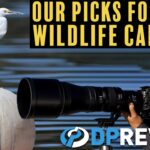Key Takeaways
-
Start with a reliable camera: DSLRs and mirrorless cameras are top picks for wildlife filmmaking.
-
Invest in a variety of lenses, including a telephoto lens for distant shots and a wide-angle lens for habitat scenes.
-
A sturdy tripod and a gimbal or stabilizer are crucial for capturing steady and smooth footage.
-
High-quality audio recording equipment is essential to capture the natural sounds of wildlife.
-
Don’t forget the supporting gear: extra batteries, memory cards, and filters can make or break your filming session.
When you set out to capture the untamed beauty of the wild, the right equipment can make all the difference. It’s not just about having a fancy camera; it’s about having the right tools that work together to tell a story. Let’s dive into what you’ll need to embark on this thrilling journey.
The Cinematographer’s Toolkit: What You’ll Need
Before you trek into the wilderness, you’ll need to gear up. This means choosing a camera that can handle the rigors of outdoor filming, selecting lenses that bring distant animals up close, and ensuring your footage is steady with the right supports.
From Novice to Pro: Building Your Gear Set Step by Step
Starting out, you might not have the budget for all the bells and whistles. That’s okay. Begin with the essentials and build your kit as you grow. A good camera, a versatile lens, and a solid tripod are your first steps.

“Epic Adventures with Bertie Gregory …” from www.vox.com and used with no modifications.
Gearing Up: Selecting Your Wildlife Filmmaking Camera
Choosing the right camera is like finding a trusted companion for your adventures. You want something rugged, reliable, and capable of capturing the beauty you’re witnessing. Here’s how to pick the one that’s right for you.
DSLRs Versus Mirrorless: Weighing Your Options
Both DSLRs and mirrorless cameras have their merits. DSLRs are known for their optical viewfinders and extensive lens options. Mirrorless cameras, on the other hand, are lighter and more compact, making them ideal for long treks. Consider your needs and choose accordingly.
Investing in Longevity: What to Look for in a Camera Body
When selecting a camera body, consider durability, battery life, and image quality. You want a camera that can withstand the elements and won’t die on you after a few hours in the field. Look for weather-sealed bodies and cameras that support high ISO ranges for those early morning and late evening shoots.
Through the Lens: Choosing the Right Optics for Wildlife
Now, let’s talk lenses. The glass you choose is your window to the world of wildlife, and each lens serves a unique purpose.
Going the Distance: The Importance of Telephoto Lenses
A telephoto lens is a must-have for wildlife filmmakers. It allows you to capture the intricacies of animals that are too far away or too dangerous to approach. Look for lenses with a focal length of at least 200mm, but the longer the better, especially for birds and skittish creatures. For an example of a camera that meets these requirements, check out the Nikon COOLPIX P1000 review.
The Wide Angle Perspective: When to Go Broad
On the flip side, a wide-angle lens is perfect for those breathtaking habitat shots that place your subject in its environment. A lens that goes down to 16mm or wider can provide that immersive feel of being there with the animal.
Prime vs. Zoom: A Balancing Act for Clarity and Versatility
Prime lenses, with their fixed focal lengths, offer superior sharpness and light-gathering capabilities—ideal for the low-light conditions of dawn and dusk. Zoom lenses, while slightly less sharp, give you flexibility to adapt to the unpredictable movements of wildlife. Both have a place in your bag.
Keeping It Steady: Tripods and Stabilizing Gear
A shaky hand can ruin a perfect moment. That’s where tripods and stabilizers come in.
Picking the Right Tripod: Features That Matter
Your tripod needs to be as rugged as your camera. Look for one that’s lightweight yet durable, with a fluid head for smooth panning. Carbon fiber tripods offer the best balance between weight and stability.
Gimbals and Stabilizers: Ensuring Smooth Footage on the Move
When you’re on the move, a gimbal or stabilizer is invaluable. It will help you keep your shots steady, no matter how much you move. This is essential for tracking animals in action or walking through their habitats.
Sound Matters: Audio Equipment for Wildlife Filmmakers
The roar of a lion, the chirping of birds, the rustling of leaves—sound is half the experience in wildlife filmmaking. You need the right gear to capture it.
External Microphones: Capturing the Calls of the Wild
On-camera microphones won’t cut it. Invest in a quality shotgun mic to capture directional sound and a lavalier mic for any narration or interviews in the field. Remember, the closer the mic to the source, the better the sound quality.
Wind and Weather: Shielding Your Sound in Nature
Outdoor recording comes with its challenges. Wind can wreak havoc on your audio. Use windshields and deadcats to protect your microphones and preserve the natural sounds you’re trying to capture.
-
Choose a shotgun mic for directional audio capture.
-
Use lavalier mics for clear narration or interviews.
-
Always shield your mics from wind and weather disturbances.
Accessories That Make a Difference
Beyond the camera and lenses, there are accessories that can take your wildlife filmmaking to the next level.
Filters for the Field: Polarizers and NDs
Polarizing filters can reduce glare and enhance colors, making your footage pop. Neutral Density (ND) filters are like sunglasses for your lens, crucial for controlling light and achieving a cinematic look in bright conditions.
Extra Power: Battery Packs and Portable Charging Solutions
You’re often out for hours, far from any power source. Always carry extra batteries and consider a solar charger or a power bank to keep your gear running all day.
Memory and Storage: Keeping Your Footage Safe
High-capacity memory cards are a must, and multiple cards are better than one. After all, running out of storage is the last thing you want. And once you’re back home, transfer your footage to reliable external hard drives or a cloud service for safekeeping.
Post-Production Tools: Bringing It All Together
Editing is where the magic happens. It’s the process of selecting, arranging, and refining your footage to tell the best story possible. But before you can start slicing and dicing, you need the right software.
Editing Software Choices: From Free to Professional
There are plenty of options out there, from user-friendly programs for beginners to high-end software used by industry professionals. If you’re just starting out, consider free software like DaVinci Resolve or HitFilm Express. They offer a range of features that are perfect for learning the ropes. As you advance, software like Adobe Premiere Pro or Final Cut Pro offers more sophisticated tools that can take your films to the next level.
Storage and Archiving Strategies: Organizing Your Work
Good organizational habits are key. Start by creating a consistent file naming system and a logical directory structure. Use external hard drives for archiving raw footage and edited projects. Additionally, cloud storage can serve as a backup in case of hardware failure. Remember, redundancy is your friend in digital data storage.
Frequently Asked Questions (FAQ)
Now, let’s address some common questions you might have about starting your journey in wildlife filmmaking.
Can I start wildlife filmmaking with a smartphone?
Absolutely! Today’s smartphones are equipped with high-quality cameras capable of shooting in 4K. They’re a great tool for learning the basics of framing, composition, and storytelling. Plus, there are various accessories available to enhance your phone’s capabilities, like external lenses and microphones.
How much should I budget for my initial equipment setup?
It’s possible to start with a modest budget of a few hundred dollars, especially if you opt for entry-level gear or second-hand equipment. As you grow, you can invest more into your kit. For a professional setup, you may be looking at several thousand dollars, but it’s all about balancing cost with the quality and features you need.
And remember, the best camera is the one you have with you. It’s not about having the most expensive gear, but about understanding how to use what you’ve got to capture the stories you want to tell.
Is it worth investing in a drone for wildlife filmmaking?
Drones can offer breathtaking aerial perspectives and add production value to your films. However, they come with their own set of regulations and ethical considerations, especially around wildlife disturbance. Weigh the pros and cons before making the investment.
For instance, drones can be incredibly useful for establishing shots and showing the scale of landscapes. But you should always prioritize the welfare of the animals and the environment you’re documenting.
-
Consider the unique shots a drone can provide, like aerial views.
-
Be aware of and comply with local wildlife and aviation regulations.
-
Use drones responsibly to minimize disturbance to animals.
What are some common pitfalls to avoid when purchasing equipment?
It’s easy to get caught up in the latest gear hype, but avoid buying equipment that doesn’t suit your needs or skill level. Research thoroughly, read reviews, and, if possible, test gear before purchasing. And don’t forget about the importance of reliable support and warranty services.
How do I protect my equipment in harsh field conditions?
The wild can be unforgiving, and protecting your gear is crucial. Use weatherproof bags and cases, lens hoods, and protective filters. Silica gel packets can help prevent moisture buildup in your camera bag. And always have a plan for quick shelter in case of sudden weather changes.
Wildlife filmmaking is an adventure that allows you to connect with nature and share its wonders with the world. With the right equipment, a bit of know-how, and a lot of passion, you can create films that inspire and inform. So grab your gear, head out into the wild, and start telling the stories that only you can tell.




